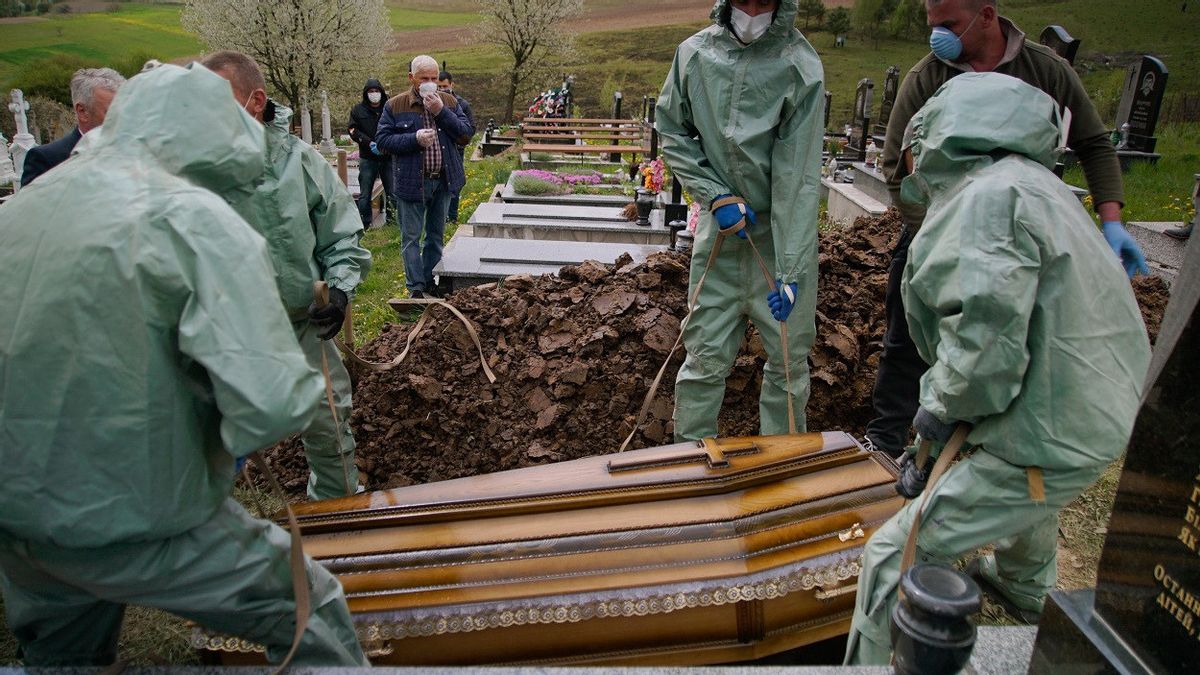JAKARTA - The end of the COVID-19 pandemic may not be certain, but the consequences of the virus will still be felt for years to come.
The pandemic has now claimed an estimated 5.9 million lives worldwide, although some scientists believe the actual death rate is much higher. Whatever the actual number, COVID-19-related deaths have flooded cemeteries causing piles of bodies and mass burial sites around the world.
And now, a new study shows the environmental impact of these extra bodies could be life-threatening for years to come.
According to research published in 'Environmental Science and Pollution Research', contamination of graves from higher human tolls during a pandemic could affect the surrounding urban environment as well.
When a corpse begins to decompose, the decomposition process produces a liquid known as grave leachate.
It is a liquid 'rich in mineral salts and organic matter' which is 'highly toxic to living things, and may also be linked to diseases such as cancer' the study said.
While cemeteries have traditionally been built away from urban communities, such as the 'Magnificent Seven' cemetery in Victorian London, increasing urbanization has brought cemeteries and human habitation closer together.

Metal from the pacemaker, any jewelry used to bury the person to the lacquer, and metal from the coffin itself can leach into the ground as well.
This process does not happen overnight. Graveyard leachate takes time to accumulate, generally only starting to be released from decomposing bodies after three years.
The process also depends on the climate of the burial ground as well. Areas with higher temperatures and rainfall tend to see higher levels of heavy metal pollution than others.
"A 70 kg corpse will release 13 kg of grave leachate as it decomposes. Think of the graveyard where hundreds of bodies are buried and how badly the soil and groundwater will be contaminated," Alcindo Neckel, who studies metals in urban burial grounds in Southern Brazil, told Popular Science as quoted from Euronews, February 17.
"This is not only a public health problem, but also an economic problem for developing cities. At this rate, the dead are slowly poisoning those who are still alive," he said.
What measures are taken to prevent contamination? To reduce the risk of groundwater contamination, there are strict guidelines in many countries for the burial of corpses.
In the UK, the minimum required groundwater protection includes burying bodies "at least 250 meters from any well, borehole or spring supplying water for human consumption." And "at least 30 meters from springs or streams that are not used for human consumption."
SEE ALSO:
Burials should also avoid the water table, the depth at which the soil is saturated. As a result, this means the gravesite should not have any standing water in it after it has been excavated.
But in Japan, due to an aging population and lack of space, 99.9 percent of bodies are now cremated, eliminating the problem of groundwater pollution completely.
To note, such decisive actions are not always heeded, especially when a country is in a state of emergency. In India, during the peak of the country's second wave, many COVID-19 victims were buried in shallow mass graves near the Ganges River, with many bodies reappearing after seasonal flooding.
This creates health problems among the local population, as diseases such as cholera can spread to waterways if bodies are not properly buried.
The English, Chinese, Japanese, Arabic, and French versions are automatically generated by the AI. So there may still be inaccuracies in translating, please always see Indonesian as our main language. (system supported by DigitalSiber.id)


















